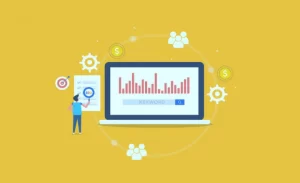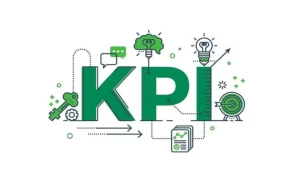In the fast-paced world of client-facing roles, proactive communication is a vital skill that can set you apart from the competition.
While it may seem daunting to add yet another task to your already busy schedule, proactive communication can save you time in the long run.
By anticipating your client’s needs and regularly sharing relevant information, you can establish trust, build loyalty, and uncover valuable insights.

What is Proactive Communication?
Proactive communication is an approach that focuses on connecting with customers before they feel the need to reach out.
Unlike reactive communication, where businesses passively respond to customer issues after they arise, proactive communication involves taking the initiative to anticipate customer needs and share valuable information or offers preemptively.
By doing so, businesses can prevent problems, improve the customer experience, and build long-lasting relationships.
The core difference between proactive and reactive communication lies in their focus. Proactive communication is future-oriented, aiming to anticipate needs, while reactive communication is more concerned with addressing past issues. By demonstrating care and foresight, proactive communication fosters trust and loyalty.
Why Proactive Communication Matters
Proactive communication offers a multitude of benefits for both you and your clients. Here are some compelling reasons why it should be an integral part of your client engagement strategy:
- Insight into Your Work: By keeping your clients informed about the progress of their projects, you demonstrate your commitment to achieving their goals. Regular updates help them understand the value you bring to the table and keep them engaged in the process.
- Demonstrates Care: Proactively sharing insights and creative ideas shows that you genuinely care about your client’s success. It indicates that you are willing to go above and beyond to deliver exceptional results and exceed their expectations.
- Builds Trust: When they see that you are actively monitoring their account and keeping them informed, they feel confident in your abilities and are more likely to maintain a long-term relationship with your company.
- Establishes Loyalty: Proactive communication sets your company apart from competitors by showing your clients that you are invested in their success. When they feel valued and supported, they are more likely to remain loyal to your brand.
- Provides Value: Clients often lack the time or resources to generate information or develop creative strategies themselves. By proactively sharing valuable insights and ideas, you demonstrate your expertise and provide added value to your clients’ businesses.
- Uncovers Client Needs and Feelings: Proactive communication allows you to gain deeper insights into your client’s needs, concerns, and priorities. By actively listening to their feedback and addressing their pain points, you can better align your strategies with their goals.
- Prevents Future Issues: By keeping your clients informed about account activities and potential challenges, you eliminate surprises and prevent issues from escalating. Proactive communication allows you to address any concerns before they become significant problems.
Benefits of Proactive Communication
Implementing proactive communication as part of a customer lifecycle strategy offers several benefits:
- Building customer loyalty: In today’s competitive landscape, gaining customer trust requires effort. Proactive communication demonstrates a commitment to customer satisfaction, honesty, and transparency. By keeping customers informed about any issues and sharing valuable information, businesses can foster trust and loyalty.
- Enhanced control over communication: Proactive communication empowers businesses to guide the conversation and control the information customers receive. By taking the initiative to share valuable updates, businesses can shape customer perceptions and avoid the consequences of inaccuracies.
- Personalized engagement: Proactive communication enables businesses to engage customers with targeted offers and information relevant to their needs. By leveraging customer data, businesses can provide a personalized experience that makes customers feel valued and understood.
- Improved organizational productivity: Proactive communication allows businesses to answer customer questions before they even have a chance to ask. By addressing problems early on, businesses can reduce the number of incoming support calls and streamline operations.
Proactive Communication Strategies
Now that we understand the importance of proactive communication, let’s explore some practical strategies to make the process easier and more effective.
1.Provide Regular Project Updates
Clients appreciate being kept up-to-date on the progress of their projects. Instead of waiting for monthly reports or scheduled calls, proactively share updates on important milestones, test results, or troubleshooting efforts. This demonstrates your commitment to delivering timely and transparent communication.
Tip:
Create a template that can be easily filled out with relevant information. This saves time and ensures consistency in your updates.
2. Celebrate Exciting Results
Good news is always worth sharing. When you notice significant gains, wins, or interesting test results within your client’s account, take the opportunity to celebrate with them. This not only strengthens your relationship but also reinforces the value you bring to their business.
Tip:
Use visuals such as screenshots or graphs to illustrate the results and provide context. Explain what these achievements mean for the account going forward.
3. Report Unusual Activity or Problems
When you notice any unusual activity or potential issues within your client’s account, it’s crucial to report them promptly. Take the time to gather information, identify the potential cause, and outline the next steps you plan to take.
Even if you haven’t determined the exact cause, let your client know that you’re aware of the situation and actively working towards a resolution.
Tip:
During unexpected issues, focus on providing a concise overview of the problem, its potential impact, and the steps you’re taking to resolve it. Keep the client informed throughout the process until the issue is resolved.
4. Present New and Creative Ideas
Your clients rely on you to come up with innovative marketing strategies and tactics. Set aside dedicated time for brainstorming sessions and creative thinking. By proactively strategizing and presenting new ideas, you demonstrate your commitment to driving their success.
Tip:
Block off time each week for brainstorming sessions, invite team members to join, and encourage a collaborative environment. This helps generate fresh ideas and fosters a creative mindset.
5. Share Industry News and Updates
As a digital marketing specialist, it’s your responsibility to stay informed about industry trends and news. Your clients may not have the time or resources to keep up with these developments, so proactively sharing relevant information can position you as a trusted advisor.
Tip:
Create email templates that can be customized and distributed to all clients when there are significant industry updates. This saves time and ensures consistent communication.
The Role of Live Chat in Proactive Customer Service
Live chat is an effective tool for proactive customer service. It enables businesses to connect with customers in real time, build stronger relationships, and improve CLV.
With live chat, businesses can offer customers the most sought-after mode of online communication, as 41% of customers prefer live chat over other digital communication methods.
To make proactive chat work effectively, consider the following recommendations:
- Be ready and responsive to customers: Always be prepared to respond quickly and efficiently to customer inquiries. This demonstrates attentiveness and proactiveness in addressing customer needs.
- Make it easy to accept or decline chat invitations: While reaching out proactively is beneficial, remember to give visitors the freedom to accept or decline the chat invitation.
- Customize chat invitations: Utilize customer data to personalize live chat invitations based on their preferences and behavior on the website. This personalization increases the chances of customers accepting the chat invitation.
- Ensure quality customer service: To effectively provide proactive communication, ensure that your customer service team is well-trained and knowledgeable about the products and services offered. This enables them to quickly and accurately respond to customer inquiries.
- Engage online customers with targeted offers: Utilize proactive live chat to present customers with targeted offers that align with their needs and preferences. This helps customers feel that they are in the right place at the right time, increasing their engagement and satisfaction.
- Align chat objectives and measurements: Identify key performance indicators that require improvement and use live chat to connect with customers and enhance those metrics. Target specific areas where proactive communication can make a significant impact.
- A/B test and gather feedback: Implement proactive communication via live chat and continuously evaluate its effectiveness. A/B tests different invitations and offers to determine the most successful approach.
How to improve your proactive communication skills
To improve your proactive communication skills, here are five tips:
- Know your audience: Understand who you are communicating with and tailor your message accordingly. Consider their needs, preferences, and level of understanding.
- Be clear and concise: Use simple language to ensure your message is easily understood. Avoid jargon or technical terms that may confuse your audience.
- Practice active listening: Pay attention to what others are saying and show genuine interest. Ask questions to clarify any misunderstandings and demonstrate that you value their input.
- Be proactive in sharing information: Anticipate potential needs or questions and provide relevant information in advance. This shows that you are proactive and committed to keeping others informed.
- Seek feedback: Encourage open and honest feedback from others to gauge the effectiveness of your communication. Actively listen to their suggestions and make necessary improvements.
By implementing these tips, you can enhance your proactive communication skills and foster better relationships in both personal and professional settings.
Conclusion
Proactive client communication is a powerful tool for effective client engagement. By investing time and effort into proactive strategies, you can build trust, establish loyalty, and provide exceptional value to your clients.
Remember, each client is unique, so experiment with different tactics to gauge what types of communication resonate best with each individual. Embrace the power of proactive communication and watch your client relationships flourish.
Looking for a proactive digital marketing agency partner? Workshop Digital offers forward-looking strategies and a team of experts dedicated to anticipating your needs. Contact us today to see how we can help your business thrive.
Posts that may interest you:


